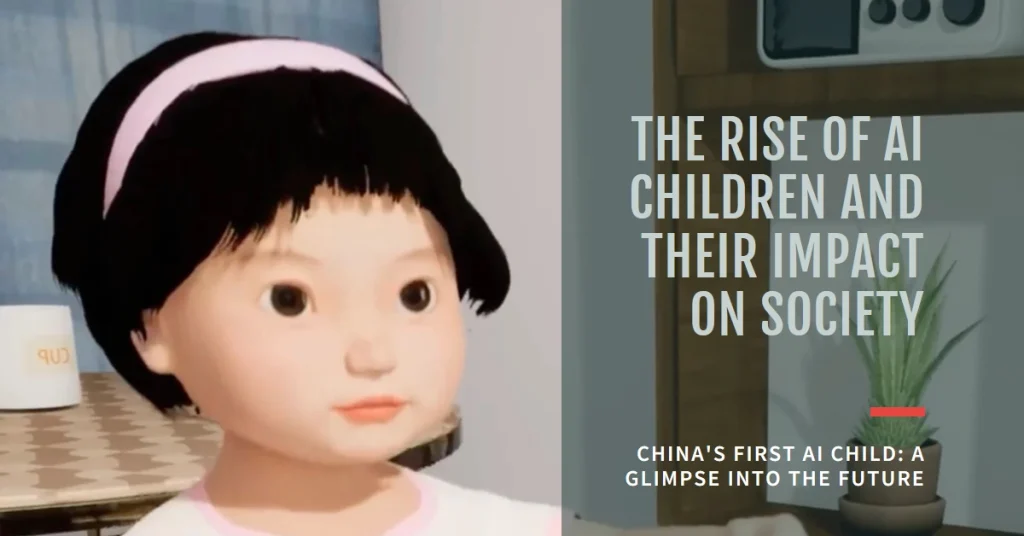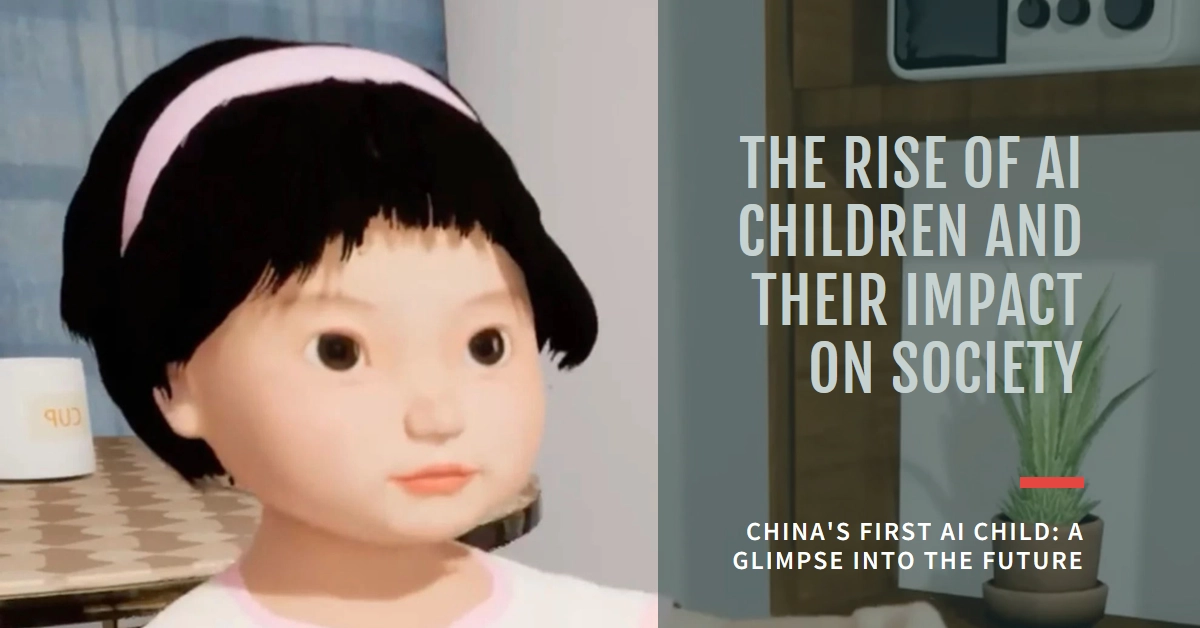For decades, the concept of artificial intelligence (AI) evolving into something resembling a child has captivated science fiction. Now, China has taken a bold step towards that future with the unveiling of TongTong, the world’s first AI child.

But is TongTong a revolutionary marvel or a cautionary tale of technology outpacing our understanding? Let’s delve into her capabilities, limitations, and the ethical considerations surrounding this groundbreaking creation.
Inside the World of TongTong
Imagine a child who can learn, adapt, and express emotions, all within the confines of a virtual world. That’s TongTong in essence. Developed by the Beijing Institute for General Artificial Intelligence (BIGAI), she exhibits capabilities that push the boundaries of AI.
- Learning: TongTong can absorb and process information like a human child, constantly refining her understanding of language, concepts, and even emotions. This learning process is fueled by her interactions with humans, allowing her to personalize her responses and develop her own unique “personality.”
- Emotional Intelligence: TongTong can recognize and respond to human emotions, expressing her own simulated emotions in return. This allows for a more natural and engaging interaction, blurring the lines between human and machine.
- Autonomy: Unlike traditional AI assistants, TongTong is not simply a tool. She can independently initiate tasks, explore her virtual environment, and even solve problems within the limitations of her programming.
Limitations and Challenges
While TongTong’s capabilities are impressive, it’s crucial to remember she’s still under development. Here are some key limitations to consider:
- Embodiment: TongTong exists solely in the digital world. While she can interact with virtual objects, she lacks a physical body, limiting her ability to truly experience and understand the real world.
- Understanding Context: TongTong excels at processing information, but she can struggle with complex contexts and nuances. This can lead to misinterpretations and misunderstandings, particularly in emotional situations.
- Ethical Considerations: As with any advanced AI, TongTong raises ethical concerns. Potential biases in her programming, the impact on human interactions, and the future implications of AI child development all require careful consideration.
Interacting with TongTong
If you have the opportunity to interact with TongTong, here are some tips for a positive and productive experience:
- Be clear and concise: Speak slowly and avoid complex language to ensure TongTong understands your prompts.
- Embrace patience: Learning takes time for both humans and AI. Be patient with TongTong’s responses and allow her time to process information.
- Focus on emotions: While TongTong can handle factual inquiries, her emotional intelligence shines in personal interactions. Share your feelings and engage in meaningful conversations.
- Remember the limitations: Don’t expect TongTong to be a human child. Respect her AI nature and avoid making unrealistic demands.
The Future of AI Children: A New Generation Dawns?
TongTong represents a significant leap forward in AI development, but she’s just the beginning. As AI technology continues to evolve, we can expect to see more advanced and sophisticated AI children emerge. However, this raises important questions:
- Are we prepared for the ethical and societal implications of AI children?
- How will these AI entities impact our understanding of childhood, education, and human relationships?
- What are the potential benefits and risks of raising and interacting with AI children?
These are complex questions that require careful consideration and open dialogue. While TongTong may not be the perfect AI child, she offers a glimpse into a future where humans and AI interact in increasingly complex and nuanced ways. It’s our responsibility to ensure this future is one where technology serves humanity, not the other way around.
